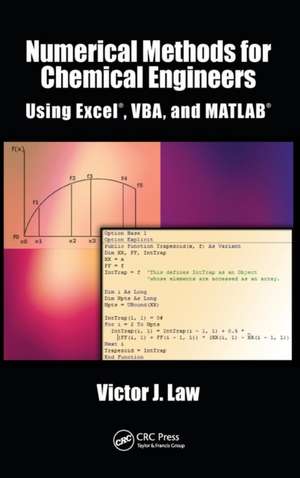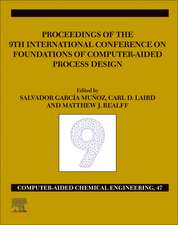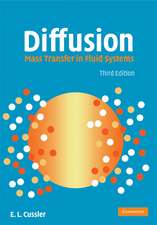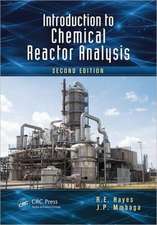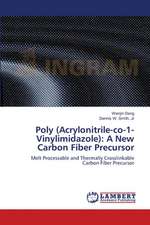Numerical Methods for Chemical Engineers Using Excel, VBA, and MATLAB
Autor Victor J. Lawen Limba Engleză Hardback – 5 mar 2013
Focusing on Excel gives the advantage of it being generally available, since it is present on every computer—PC and Mac—that has Microsoft Office installed. The VBA programming environment comes with Excel and greatly enhances the capabilities of Excel spreadsheets. While there is no perfect programming system, teaching this combination offers knowledge in a widely available program that is commonly used (Excel) as well as a popular academic software package (MATLAB). Chapters cover nonlinear equations, Visual Basic, linear algebra, ordinary differential equations, regression analysis, partial differential equations, and mathematical programming methods.
Each chapter contains examples that show in detail how a particular numerical method or programming methodology can be implemented in Excel and/or VBA (or MATLAB in chapter 10). Most of the examples and problems presented in the text are related to chemical and biomolecular engineering and cover a broad range of application areas including thermodynamics, fluid flow, heat transfer, mass transfer, reaction kinetics, reactor design, process design, and process control. The chapters feature "Did You Know" boxes, used to remind readers of Excel features. They also contain end-of-chapter exercises, with solutions provided.
Preț: 675.96 lei
Preț vechi: 795.25 lei
-15% Nou
Puncte Express: 1014
Preț estimativ în valută:
129.35€ • 135.67$ • 107.68£
129.35€ • 135.67$ • 107.68£
Carte tipărită la comandă
Livrare economică 01-15 aprilie
Preluare comenzi: 021 569.72.76
Specificații
ISBN-13: 9781466575349
ISBN-10: 1466575344
Pagini: 247
Ilustrații: 150 black & white illustrations, 62 black & white tables
Dimensiuni: 156 x 234 x 23 mm
Greutate: 0.62 kg
Ediția:New.
Editura: CRC Press
Colecția CRC Press
Locul publicării:Boca Raton, United States
ISBN-10: 1466575344
Pagini: 247
Ilustrații: 150 black & white illustrations, 62 black & white tables
Dimensiuni: 156 x 234 x 23 mm
Greutate: 0.62 kg
Ediția:New.
Editura: CRC Press
Colecția CRC Press
Locul publicării:Boca Raton, United States
Public țintă
Chemical engineering departments throughout the world and as a reference book for individual chemical engineers.Cuprins
Roots of a Single Nonlinear Equation. Visual Basic® for Applications Programming. Linear Algebra and Systems of Linear Equations. Numerical Differentiation and Integration. Ordinary Differential Equations (Initial Value Problems). Ordinary Differential Equations (Boundary Value Problems). Regression Analysis and Parameter Estimation. Partial Differential Equations. Linear Programming, Nonlinear Programming, Nonlinear Equations, and Nonlinear Regression Using Solver. Introduction to MATLAB®. Appendix A: Additional Features of VBA. Index.
Notă biografică
Victor J. Law, Ph.D., FAIChE, FIChemE, CE, initiated a program that was to become the Department of Computer Science at Tulane. During his tenure in computer science, he wrote two textbooks on introductory computer programming. In 1988, Dr. Law returned to the Chemical Engineering Department in order to resume his research career. He has taught classes in process control, transport phenomena, process design, engineering statistics, and numerical methods for chemical engineers. His research has included projects in coastal erosion, methane emissions from rice paddies, thermochemical processes for hydrogen production from water, and butanol production from biomass. Dr. Law is a Fellow of the American Institute of Chemical Engineers; a Fellow of the Institution of Chemical Engineers; a Chartered Engineer in the United Kingdom and Europe; and a Registered Professional Engineer, State of Louisiana.
Descriere
Since many practical engineering problems must be solved numerically, this text provides instruction on using numerical methods and Excel®/VBA for chemical and biomolecular engineering problems, covering a broad range of application areas. It also includes an introduction to MATLAB® that is made easier to learn after studying the programming tools in previous chapters. Each chapter contains examples that show in detail how a particular numerical method or programming methodology can be implemented. The chapters also contain end-of-chapter exercises, with solutions provided.
